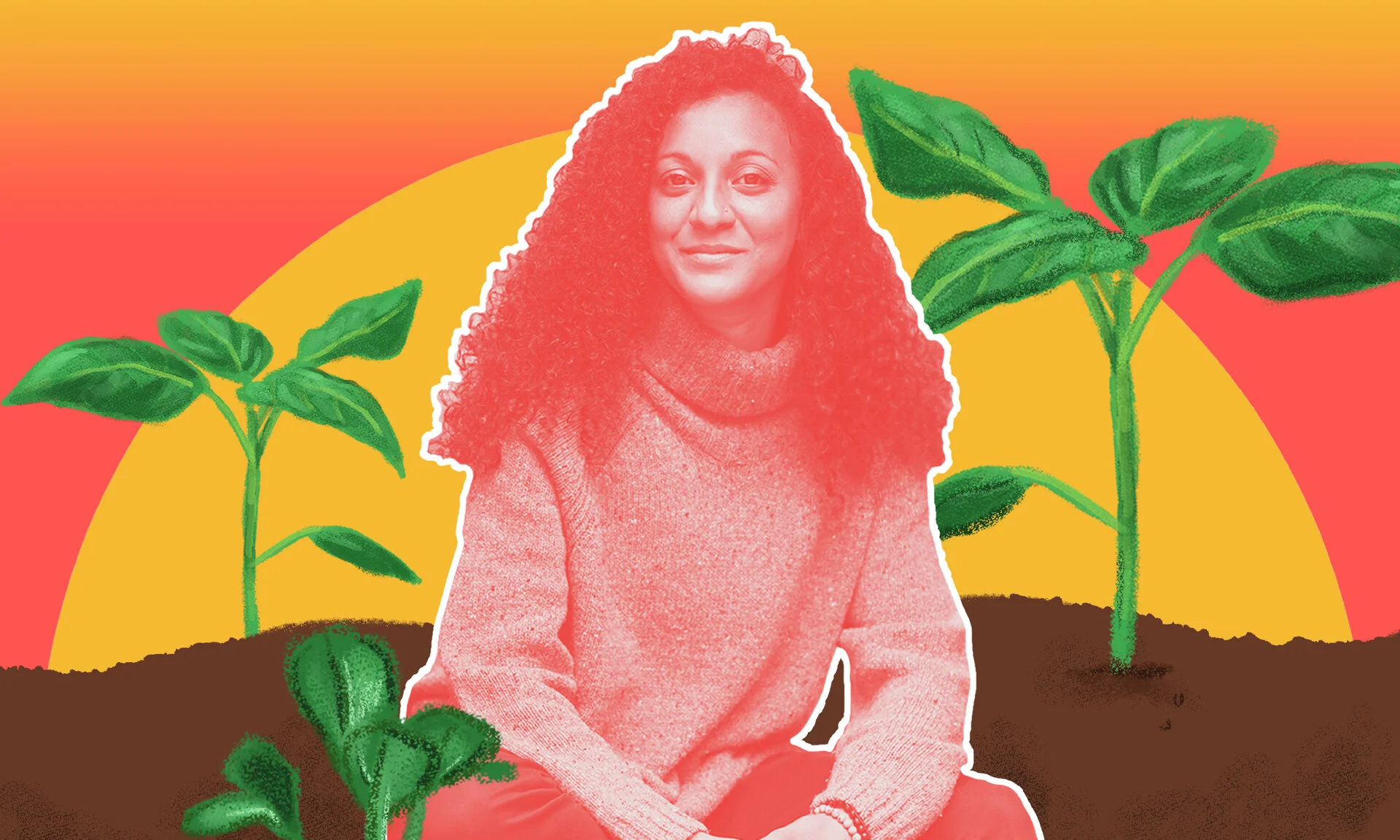The History Of Black British Gardeners Is One Of Resistance
Gardening while Black is a vastly different thing to gardening as a white person. For one, Black people in the UK are four times as likely as white people to have no garden, balcony, or private outdoor space. Then there’s the history of violence and oppression at the hands of white people that complicates Black people’s connection with the land. But, Black gardening history is also a story of resistance, long-held knowledge, nourishment and survival.
To understand Black people’s connection with the land, you have to look at the transatlantic slave trade. Enslaved peoples were stolen from Africa, trafficked far from home and forced to cultivate sugar, cotton and tobacco for the profit of colonial powers. But, aside from their forced labour on the land, the horticultural skills of enslaved Africans were also exploited for the gain of British scientists.
During the time of enslavement, British naturalists, including one named James Petiver, often used enslaved people as collectors of plant and insect specimens because they had greater knowledge of them. Sam Kean writes: “Some naturalists also instructed their contacts abroad to train slaves as collectors. Slaves often knew about specimens that Europeans didn’t and visited areas that Europeans wouldn’t. Those slaves virtually never got credit for their work, though Petiver did offer to pay them a half-crown (£14 today) for every dozen insects or 12 pence (£5) for every dozen plants.”
Some of these specimens will have contributed to the wealth, both of knowledge and finances, of British institutions like the Natural History Museum, Kew Gardens, and the Royal Horticultural Society. Institutions which now show varying levels of willingness to interrogate how they’ve benefited from colonialism. In a post entitled Addressing Racism Past and Present director of Royal Botanic Gardens Kew Richard Deverell wrote of how “parts of Kew’s history shamefully draw from a legacy that has deep roots in colonialism and racism”. This isn’t just Black British gardening history, of course, but British history full stop.
“Gardening was also used by enslaved people as a means of resisting and surviving”
Gardening was also used by enslaved people as a means of resisting and surviving. Gardens were a place they could grow food to supplement the deliberately meagre and malnutritious diet slavers allowed them. As Brown University visiting associate professor of International & Public Affairs and Africana Studies Geri Augusto explains in a blog for Liverpool museums:
“Enslaved people took the initiative to create small plots and provision grounds. It was a very small patch of ground either beside the slave hut or on […] a piece of land that the plantation owner didn’t need. On these small plots they would raise vegetables, medicinal plants and even flowers.” She continues, “In a way you could think of it as resistance, survival is always resistance if you can make it. They were supplementing their diet, but also it was a small patch in which they could be human.”
In Seeds of Memory: Botanical Legacies of the African Diaspora, professor of geography at UCLA Judith Carney writes of “the agency” these gardens gave. And, a Penn Museum blog explains how they were often so successful that enslaved people could sell their produce for money, helping them make small improvements to the dire conditions they were subjected to.
In these gardens enslaved people grew vegetables like Okra that came from Africa with them, plants they arguably would have known how to cultivate thanks to ancestral skills and knowledge.
Black people weren’t just gardening in British colonies hundreds of years ago, but in Britain itself. There are unnamed individuals like the caretaker of Newcastle’s Shieldfield Green Park in 1888 who, as historian Jeffrey Green notes on his website, was a Black man. But there are also Black gardeners in history we can put names to, like Thomas Birch Freeman, who was born in Twyford, Hampshire in 1809. He was a gardener on an estate in Suffolk and later contributed horticultural samples to Kew Gardens’ collection after relocating to the Gold Coast (now Ghana) as a missionary. As gardening historian Advolly Richmond writes, “[Birch Freeman’s] contribution to botany, plant collecting and horticulture has been overshadowed by his religious legacy.”
“Black people weren’t just gardening in British colonies hundreds of years ago, but in Britain itself”
Even earlier, there was John Ystumllyn, birth name unknown, brought to my attention by an article in Horticulture Week by Zahra Zaidi. Ystumllyn was one of the first Black men to be recorded living in North Wales. He was abducted as an eight-year-old from Africa in around 1746 and taken to Wales to live with the Wynn family.
Zaidi writes, “[He] was placed in the garden to learn horticulture. The Wynns discovered that John could do just about anything in terms of gardening, crafts, or floristry”. Ystumllyn was added to the Oxford Dictionary Of National Biography, cited as someone “whose settled life existence in rural Wales reminds us of the persity of the historical experience of Black people in Britain”.
Black British gardening history is, of course, alive and still being made. In 2015, Danny Clarke became the first Black gardener to be given a TV show. In 2016, Juliet Sargeant became the first Black woman to exhibit at and then win the Chelsea Flower Show with a garden that referenced slavery of the past and the present. The same year, Flo Headlam became the first Black presenter of BBC’s Gardeners World.
Milestones like these are bittersweet in their overdue recognition of Black gardeners’ talents and their exposure of how many barriers remain. But they are also important in the narratives they challenge, as Julliet Sargeant tells me. “[At] Chelsea, most of the visitors, especially the people who buy the very expensive tickets, are white. It’s not that there aren’t black people there, but they’re usually the people who are serving drinks or working in the car park. They were saying to me: ‘It’s brilliant that you’re here, we didn’t know it was possible to be a Black garden designer.’ And I got loads of emails afterwards from young people saying ‘we didn’t know there were any Black garden designers.’
Black people have been rewriting and reclaiming what it means to be Black and garden for centuries, and continue to do so. Whether it’s the Uplands in Birmingham, where allotmenteers grow ingredients for the Caribbean food they know and love, or organisations like Wild In The City which help Black people understand their connection to the land as ancestral.
Black people have been in gardens, have been horticulturists, have been botanists, have been hobby gardeners, have been allotmenteers, have been houseplant-lovers. Just because it isn’t always recorded in history books, taught in schools, or displayed in museums doesn’t mean it didn’t happen.






